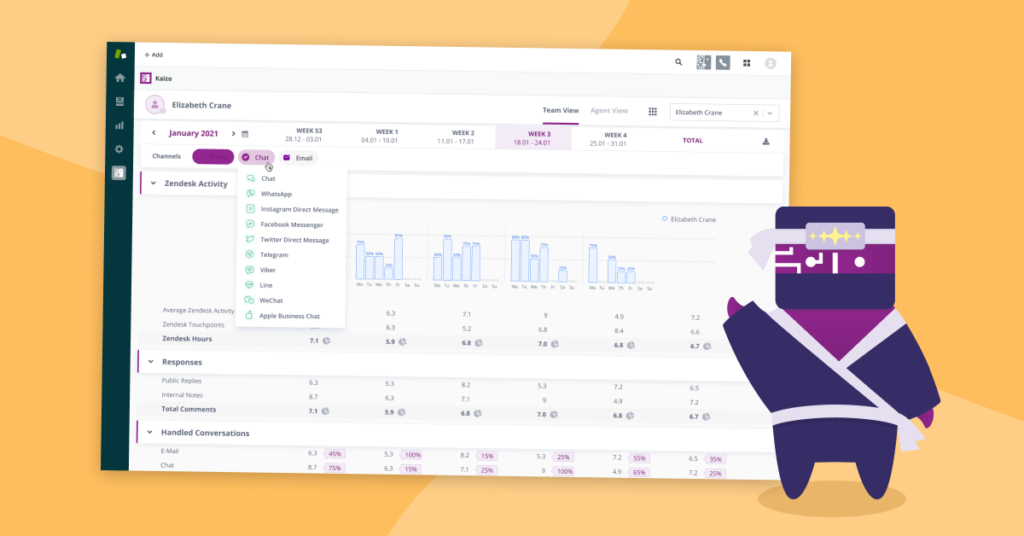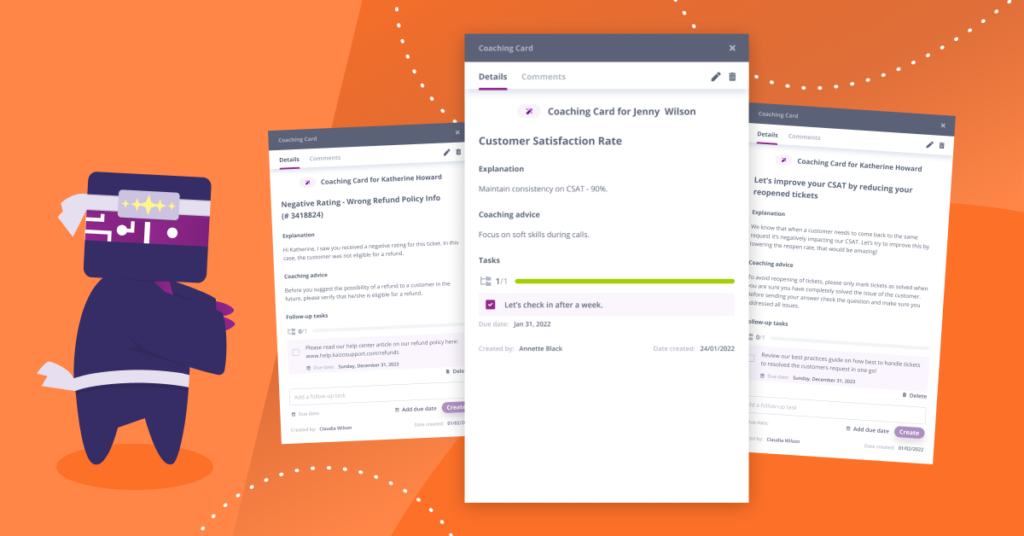A customer service process is a fundamental component of any business. Without it, you would have a hard time managing your customers’ inquiries, concerns, and feedback. You would have no clear understanding of what your workflow operations are and how you manage them.
Companies are always looking for ways to improve their customer service processes. And with good reason. It’s estimated that it costs six to seven times more to attract new customers than to retain existing ones while increasing customer retention by 5% can increase profits by 25% – 95%.
Having effective customer service processes and procedures in place is, therefore, not just a matter of business success, but also a matter of business survival and competitive ability.
The truth is that improving your customer service process isn’t difficult, at least if you know how to develop service processes that bring about consistent customer satisfaction.
Here is where you need to start.
What is a customer service process?
A customer service process is a set of steps for handling customer interactions. It can be applied to calls, emails, chats, or any other type of communication between a business and its clients.
Every company has some kind of customer service process. It might be written down or you might just have an idea of what your employees should do when a customer has a problem or complaint. Either way, it’s essential for maintaining your business and winning over loyal customers.

Poor customer service costs companies $62 billion annually in the U.S. alone, according to American Express research. Getting it wrong or even more so, failing to account for the importance of the customer care process, is a mistake you can’t afford to make.
In other words, a customer support process is an action plan that your team will follow to customize the customer experience. Processes are meant to be flexible and adaptable. They’re not one-size-fits-all solutions.
Customer service processes should be designed so that you can scale your business. With the proper process in place, you can add team members and resources as needed without jeopardizing your level of customer care.
For example, if someone tweets at your company asking for help with their purchase, how do you respond? Do you direct them to a link with FAQs? Do you ask for more details? What’s the next step after that?
This is an example of a customer service process.
Why does the customer service process matter?
In today’s world, competition is fierce. Every company wants to serve the same customers you do. It’s important to offer a great customer experience to set yourself apart from competitors and keep your customers coming back for more.
But it’s not just about that. First and foremost, customer processes are about the basics of your business, its identity, and fundamental principles.
Think about bread for a moment.
Bread is great. It can be used for so many things: sandwiches, dipping, as a side dish, and so on. You can have it plain or add some delicious toppings. You can even make it yourself.
Bread is great, but bread isn’t the sandwich. Without the bread, you won’t have a sandwich. The bread is the foundation of the sandwich, and without that foundation, you won’t have anything to hold onto.
The same goes for customer service processes. You can have all the right tools in place to help you deliver great service and support to your customers — but those tools won’t be much good if they aren’t supported by a solid process from start to finish.
What makes good customer service systems and processes?

A good customer service process should:
Focus on the needs of the customer. Make sure that every part of your process keeps the customer top-of-mind and caters to their needs at each stage of the buying cycle.
Be easy to follow. Your agents should be able to jump into any conversation and easily get up to speed on what has been discussed so far and what still needs to be done.
Be flexible enough to accommodate any situation. You know that things don’t always go according to plan. That’s why you need to have that wiggle room to get creative if need be.
5 steps to improve customer service processes
Customer service isn’t a single department or function, it’s a process that runs throughout your company. Improving it requires addressing the whole company, not just one team.
Many companies today are trying to make customer service more efficient, and they often do it by adding new processes. But this only works if you have a strong foundation in place.
If your organization isn’t functioning well internally, layering on more processes is going to lead to even more problems, which can be confusing and frustrating for customers.
The best way to improve customer service is to first work on internal processes and change the way people interact with the customer support team. That’s how you make sure all teams are focused on meeting customer needs.
1. Prioritize Customers
The first step in building your customer service process should be deciding what type of experience you want your customers to have. This will help you figure out how to prioritize each interaction or inquiry. You can decide on your own what the priorities are, but it’s often helpful to ask customers directly what they expect from their interactions with your brand.
Be customer-oriented — that’s a gospel you must have heard hundreds of times before. But there is no smoke without fire — always thinking about what would make your customers happy is the road to success.
2. Create Customer Service Standards
Once you know what type of experience you want your customers to have, it’s time to put pen to paper (or finger to keyboard) and formalize those.
What tone of voice should your agents use when communicating with customers? Do they show enough empathy?
Read more: Why empathy unlocks great customer service
What protocols should your agents follow when interacting with customers and tending to their needs?
When a customer requests a refund, do you give it right away or do you do a survey first? Ask for reasons for a refund?
And the list goes on.
The more things you can standardize the better — it will give your agents a guideline to follow.
3. Know your channels

Your customers are constantly interacting with your brand through different channels. They might be buying a product on your website and getting in touch with your support team via email or phone at the same time.
Your goal should be to create an excellent experience for your customers across all channels at all times – and this is where a solid customer service process comes into play. Plus, you need to know what channel is of priority and navigate your customers towards it.
Read more: Top 5 chat metrics and ways to improve them
And in order to maintain a high level of communication across all channels, you need to find a platform that will bring all conversations together and help you easily evaluate them to come up with actionable feedback for your agents.
4. Actively solicit feedback

Don’t just wait for customers to tell you what they think. After all, 96% of all dissatisfied customers will leave without complaining, while 91% of that group will never come back.
Send out surveys at regular intervals, and reward people for completing them by giving out vouchers or discounts. By finding out what they think of your business and its practices, you can make corrections before something turns into a major problem.
With the help of customer feedback, you can build a solid base of service processes in the business, and coach your agents accordingly. Onboarding is where your people get into the business, but it is not where they become the best customer service team ever.
Read more: Everything you need to know about customer service coaching
When you have that customer feedback at hand, combined with the insights you get from performance dashboards, you can develop a plan of action, Missions, and Coaching Cards, for your agents to know the what, when, how, and why they need to improve.

5. Be proactive
When you want to keep your customers happy, you need to be proactive about their issues, even if it looks like it’s not always possible. This means identifying potential problems early on before they come up as problems for your customers.
Your customer service needs to be prescient and preemptive, not just reactive.

This might mean having a team of people dedicated to quality control who can identify issues in your product or shipping before they get sent out. It might also mean reviewing your contact center metrics regularly and noticing when call volume is unusually high or wait times are longer than usual so that you can proactively address those issues with your team.
For example, if you’re working in e-commerce or any other sector that tends to get busy around the holidays — be sure to plan quality in advance: develop a plan of action so nobody has to sacrifice quality over quantity.
Final thoughts
A good customer service process can help you to meet your customers’ expectations and get them to return for repeat business. Without one, however, you risk losing brand loyalty and even worse, getting bad reviews that will scare away future customers.
Customers want fast solutions and someone who is able to quickly solve their problems. They don’t want someone who has to stop and think about what they’re doing. This is why investing in customer service and support processes is such a great idea.



